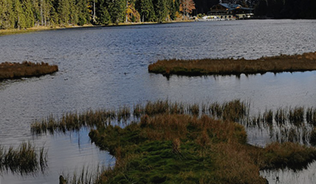The 11th February is International Day of Women and Girls in Science. The day recognises the critical role that women and girls play in addressing the major challenges of our time through their active contributions in the fields of science and technology.
Gaia Marini discusses the importance of female leadership in the water sector.
My career as an environmental manager began only recently, however it has not been poor of motivating and forming experiences. I have much to be grateful for, but one thing peaks over all: the strong women leaders that I have met along the way.
After graduating from a BSc at the University of Queensland, Australia, I quickly secured a role at the Queensland Department of Environment and Science. One woman picked my CV from a tall stack, and another called me to tell me she wanted me in her team. When I later moved on to a new role, which would end up opening up some incredible opportunities for me, I was interviewed and selected by three women. More than just giving me the opportunity to start a career in the water quality sector, in the following years these women pushed me to keep going when things were hard, rest when I needed to and inspired me to become a better leader myself.
Taking several leadership and mentorship programs, a piece of advice was often mentioned: “To become a good leader, look at who you admire, and why you admire them, and emulate it”. My thought would immediately go to the women leading me through my first few years in the professional field. However, while looking up to them, I also started noticing something else. Women in positions of power seemed to have to work harder, act more professional and project more strength than their male counterparts to be recognised as successful. Looking at most organisational charts, something appears clear: while women have managed to conquer the middle tiers of leadership, the top is still beyond reach.
Women often play an essential role in supporting a happy and cohesive workforce. Carrying much of the emotional weight of the floor, they generally do so outside of formal leadership roles. I’ve often heard the phrase “You can be a leader from any chair”. While I understand the sentiment behind such phrasing, I do believe sometimes sitting in the Director General’s chair is an important part of making a difference. So, why do we want women to be leading from the chair?
Women’s leadership is more frequently associated with transformational qualities. Transformational leadership styles involve establishing oneself as a role model, gaining the team’s trust and confidence, to work together towards a common goal. This style is more suited to lead organisations through change, which is particularly relevant to the present situation, characterised by unprecedented change. However, culture also plays a role in leadership. While a traditional transformational style may be more often adopted by white females, minority ethnic women leaders may favour styles rooted in self-awareness and centred around their followers.
In the environmental, and water management sector, women’s leadership is particularly important. Not only may their transformational style be better suited to deal with the considerable change these sectors are currently dealing with, but often women are also indirectly involved in environmental management. I remember sitting with two Aboriginal women from the Gomoroi Nation by the fresh waters of a small affluent to the Macintyre River, when working in the Queensland Murray-Darling Basin in Australia. Taking a break from the environmental assessment we were carrying out, we shared weaving techniques, while they told me about how their ancestors would sit in that very place to escape the heat of the Australian interior, and share knowledge, stories and skills related to water. Through traditional and current gender-based roles, women have acquired a great deal of social and ecological knowledge.
So why don’t we see more women in senior leadership roles? Well, there are several barriers to women reaching positions of power. From personal experience, lack of representation is one key negative loop taking place in this system. This concept is true for any minority group, not just women: seeing people who look like you doing great things helps you dream of doing those things, too. I have a strong imagination, however somehow it wasn’t until a woman took the Director General’s position at my previous organisation that I realised I could aspire to such high levels of leadership too.
To conclude, I would like to report some extracts from conversations I had while preparing this piece, with women I admire leading in the environmental field.
“The supportive leadership style that I developed has been strongly influenced by the qualities that I respected in a number of women that were in senior and executive management positions. I still look to these women today to learn further techniques that I can bring to my work and become a more effective leader to my peers.”
“Although leadership can be demonstrated in any position, it has been my experience that staff often look to the people above them who embody a set of skills that inspire them to reach new goals. When I looked for examples of leadership to learn from, I picked talented female managers in positions that I would aspire to. This is why it is so important that a variety of people with different gender identities hold upper level positions throughout an organisation.”
Artwork credit: Gaia Marini
Gaia Marini is a young environmental manager, working in the water field. After graduating from the University of Queensland in Australia with a BSc, she worked at the Queensland Department of Environment and Science managing water quality programs and policies. She is currently undertaking an MSc in Environmental Protection and Management at the University of Edinburgh.





